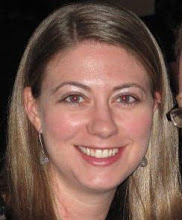 1. "The Dangers of a Food Chemical: New Evidence Against BPA" from The Atlantic
1. "The Dangers of a Food Chemical: New Evidence Against BPA" from The Atlantic"BPA is everywhere, with the CDC concluding that more than 90 percent of Americans are chronically exposed. Such pervasiveness is, in the words of one of the study's seven authors, Dr. Frederick vom Saal, "nothing short of insanity." The University of Missouri endocrinologist also does not hesitate to use the word "scary," comparing today's use of BPA to the use of lead in paint a century ago."From the NYTimes: "In Feast of Data on BPA Plastic, No Final Answer"
2. New York City seeks to ban use of food stamps for soda
"No Food Stamps for Sodas" - an editorial in the NYTimes by the New York City and New York state health commissioners
"Every year, tens of millions of federal dollars are spent on sweetened beverages in New York City through the food stamp program — far more than is spent on obesity prevention. This amounts to an enormous subsidy to the sweetened beverage industry. ... This policy change would be entirely in keeping with existing standards for defining what is and isn’t nutritious. The Agriculture Department itself has already rightly declared sugar-sweetened beverages to be “foods of minimal nutritional value.” The city’s proposed program would not reduce participants’ food stamp benefits or their ability to feed their families a nutritionally adequate diet. They would still receive every penny of support they now get, meaning they would have as much, if not more, to spend on nutritious food. And they could still purchase soda if they chose — just not with taxpayer dollars."Also: the accompanying NYTimes article and an NPR piece.
3. "After Growth, Fortunes Turn for Monsanto" from the NYTimes
Monsanto, the giant of agricultural biotechnology, has been buffeted by setbacks this year that have prompted analysts to question whether its winning streak of creating ever more expensive genetically engineered crops is coming to an end. ... Until now, Monsanto’s main challenge has come from opponents of genetically modified crops, who have slowed their adoption in Europe and some other regions. Now, however, the skeptics also include farmers and investors who were once in Monsanto’s camp.
"Ellen Kunes and Frances Largeman-Roth, authors of the best-selling The Carb Lovers Diet, encourage me to give bread a second chance. Their book aims to reestablish carbohydrates' role in a healthful diet at a time when the pendulum continues to swing between low-carb, high-protein diets a la Atkins and the low-fat, carb-rich approach."
"Independent curator Cory Bernat's goal was to study how, through printed posters and publicity, the government has tried to change dietary behavior. ... Bernat, who assembled the exhibit as part of her master's history thesis, explores methods of communication such as messaging and graphic design, and how they changed over time. In World War I, before there was a radio in every home, the posters were text-heavy and packed with information. More than two decades later, they have a 'Mad Men'-esque quality with colorful illustrations and emotional pitches geared to a nation of emerging consumers."

"Shared meals have always been about community, about what happens among family and friends — even enemies — when they gather around a table to eat; but once upon a time, before every family had its own kitchen in which Mom labored more or less alone, cooking was itself a social activity, one that fostered community and conversation around the chopping board or cook fire long before the meal was served. ...
[W]hen Mike offered to organize and host what amounted to a 36-hour dinner party, I was immediately intrigued: could an around-the-clock cook fire still exert the same social force? I barely knew most of the people with whom I’d be spending the weekend, and I wondered how well two days of working side by side and eating at the same table would wear on everyone. I also wondered about the food — whether four meals teased from a single fire, three of them from one goat, would get a little monotonous. But then, my previous experience of cooking with fire was pretty much limited to grilling slabs of meat on a Weber. I had no idea just how many different things one fire could do."




No comments:
Post a Comment